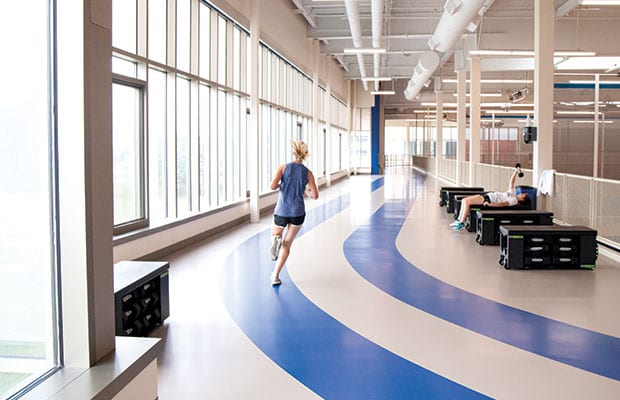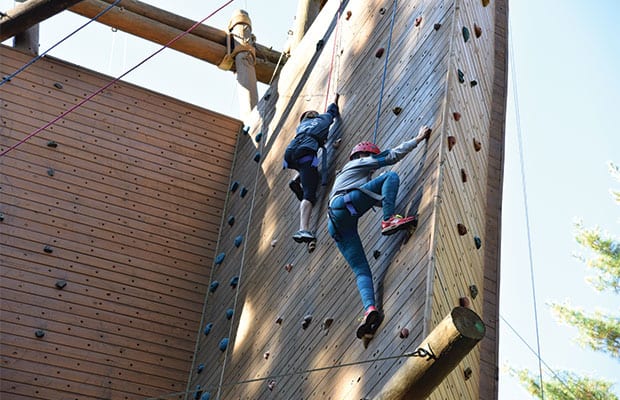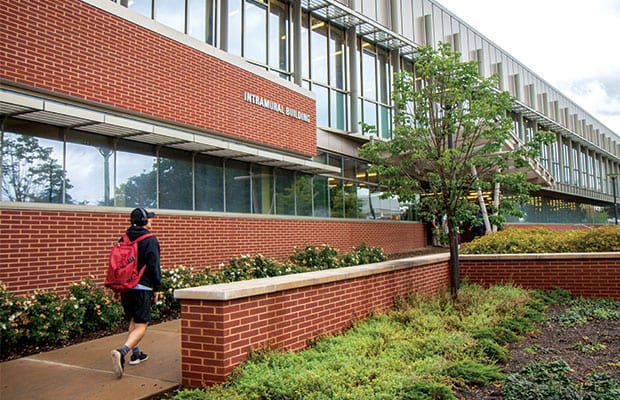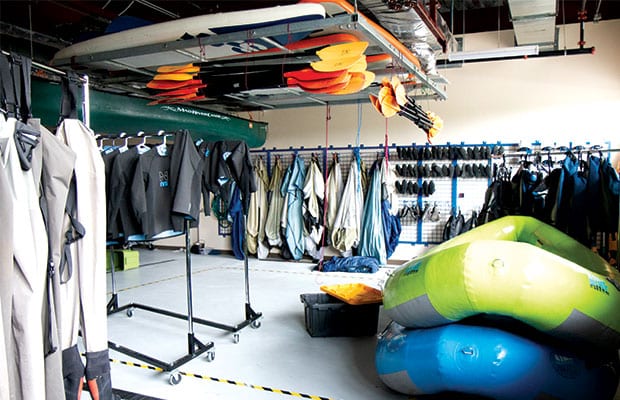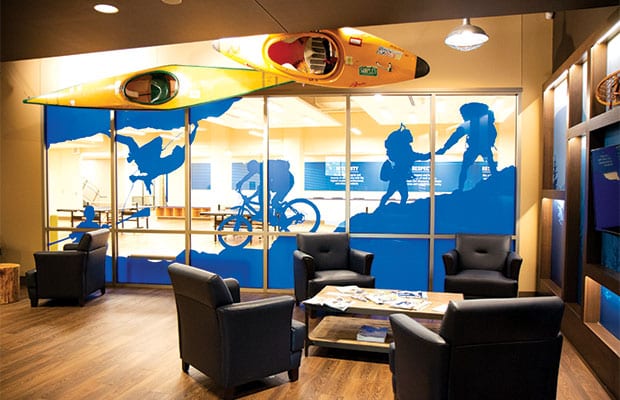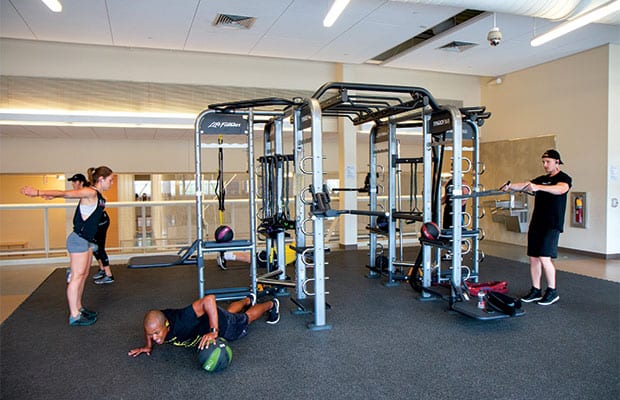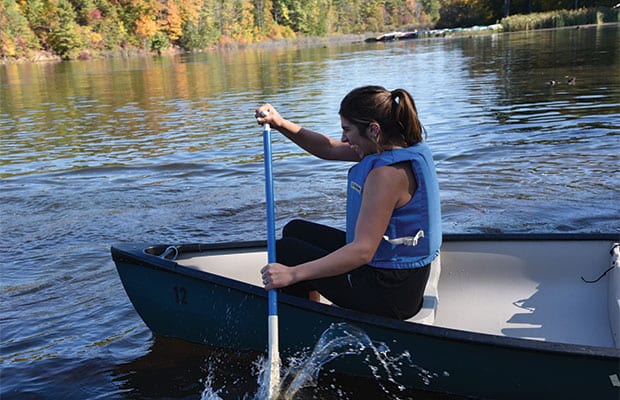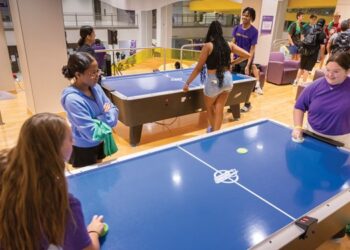Ground zero. That’s where Laura Hall started when arriving at Pennsylvania State University (Penn State) in August 2016.
When Hall was presented the opportunity of campus recreation director at Penn State, one thing stood out. “What drew me was the opportunity to be part of a complete rebirth of a new department on this scale,” she said.
Until recently, Penn State’s recreational services were under athletics. The vice president of student affairs, Damon Sims, always had a vision to bring recreation under student affairs since arriving at Penn State. So, he started the transition and after two years of an interim leader, Hall came on board.
At the same time, a five-year, three-phase renovation and addition was taking place on Penn State’s main recreation center – the Intramural Building (IM Building). Now at 280,000 square feet, it was ready for the department ramp up Hall was in charge of.
Last year, Penn State did 13 searches for recreation staff. On top of this, most of those staff who were already on the team had their responsibilities changed, and most pretty drastically. With 53 staff members, many who had been siloed in their areas or given complete autonomy in their programs, it’s been a long road. But Hall said she’s seen quite an evolution and eagerness in her staff, especially at the 2018 Big Ten Collegiate Recreation Conference. “I think for the first time they really had this tangible example of what happens when we come together as a department,” she shared.
While building a team has been one of Hall’s highlights, it’s also been a challenge. For example, she explained there had never been a facilities arm of the department before. They’ve had to go back to the basics, like learning how to respond to emergencies and communicate with one another on radios.
Linda Buonanno, the senior associate director of fitness facilities and operations, said her position was created in the restructuring of the department. She’s in charge of managing the daily operations of the facilities on Penn State’s campus – the IM Building, the Tennis Center, the White Building, Hepper Fitness Center, the fields, Stone Valley Recreation Area and McCoy Natatorium – and had a large role in the renovation/addition that took place.
She shared the focus on basics has been a lot of simply moving to better standards. For example, they developed a fitness equipment replacement plan and put maintenance contracts in place. Buonanno shared they also decided to have a wide variety of equipment from five different brands so they’d have something for everyone. “How does each piece of equipment fit in to be able to engage and let each person have not only a preference but also equipment that fits their body?” said Buonanno.
But moving to better standards, and then shooting beyond them, hasn’t stopped at plans and contracts. In fact, Penn State has embraced an entirely new model known as contemporary campus recreation.
“Contemporary to me means really understanding the emerging needs of our students to balance their academic pursuits on campus,” said Hall. “It really is the approach of serving the whole student, not just the physical well-being part of it, and helping them understand the importance of a holistic well-being model.”
Ultimately, the students don’t care what the name of the department is as long as they are getting the service, said Hall. She sees it as the rec center’s job to hit on physical well-being of course, but then expand beyond that to areas like leisure and social well-being.
Campus recreation is no longer just footballs and hoops. Social well-being, the fact a student feels safe and comfortable in a space, and the provision of leisure are just a few of the ways the industry’s role is expanding beyond nets and balls. In fact, Penn State has a vision of well-being for its Stone Valley Recreation Area.
About an 18-minute drive from campus, the university has 700 acres of outdoor rec space, plus a 70-acre lake. Currently operating like a regional park, Hall said they are reimagining what the space could be. A large part of it involves a holistic focus. She said they are looking to partner with counseling and psychological services to create a Penn State Student Center for Well-being at Stone Valley. The idea is to provide an escape for the busy student just a short drive from campus.
But despite the new focus, Penn State isn’t losing sight of traditional recreation. In fact, the center offers 125 classes a week in 18 different formats. They have had up to 76 club sports at one time – from soccer and basketball to Quidditch and figure skating – in a thriving club sport program.
Lisa Stuppy, the senior associate director for campus recreation programs, said they try to serve the student as much as possible. There’s a lot of access to facility and practice space, making so many different club sports possible. While it’s a lot to manage, Stuppy said with sound guidelines and manuals, as well as risk management and training up solid club leadership, running 76 club sports is possible. “We provide opportunities for students to engage with campus recreation through all those different program areas in a variety of ways,” she shared.
One opportunity Hall spearheaded was incorporating a student activity fee. Prior, students had to pay to use some spaces – like if they wanted to run on a treadmill – in the rec center, but others — like the basketball courts – were free. Removing financial barriers, increasing the equity of it all, and offering more hours and services were all driving factors behind the decision.
“What that allows us to do is provide programming that’s really student-centered and might introduce students to something they’ve never done before, they’ve never tried before,” said Stuppy. “Moving toward that has really opened up a lot of possibilities for our department.”
Because it is without a doubt recreation has evolved and will continue to evolve. Buonanno said being open to change has been one of her biggest lessons she has learned in the industry. She has had to change her definition of what “sport” means to align with how students see it, as well as redefine “recreation” to simply mean engagement.
At Penn State, the team is moving forward, challenging what has always been and evolving as they go. In the end, evolution as a campus recreation department is vital, shared Hall. As the students evolve and their needs change, campus rec must as well. So, staying ahead of the curve and being ready to pivot is just what Penn State plans to do.
“We are here to serve our students, so if we can’t stay flexible and amendable and dynamic, we’re not doing our jobs in serving the students,” said Hall. “What sets us apart is we are an incredibly evolving model, and with that comes opportunities to really go in a multitude of directions.”
And yet, with an unbelievable amount of potential directions, one is for certain at Penn State – that of a contemporary model.




